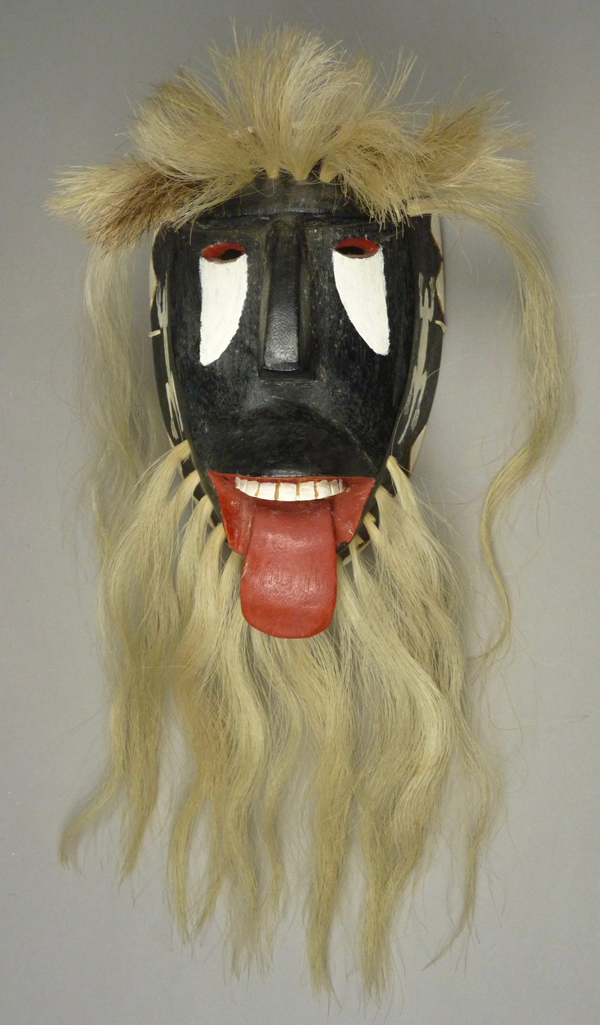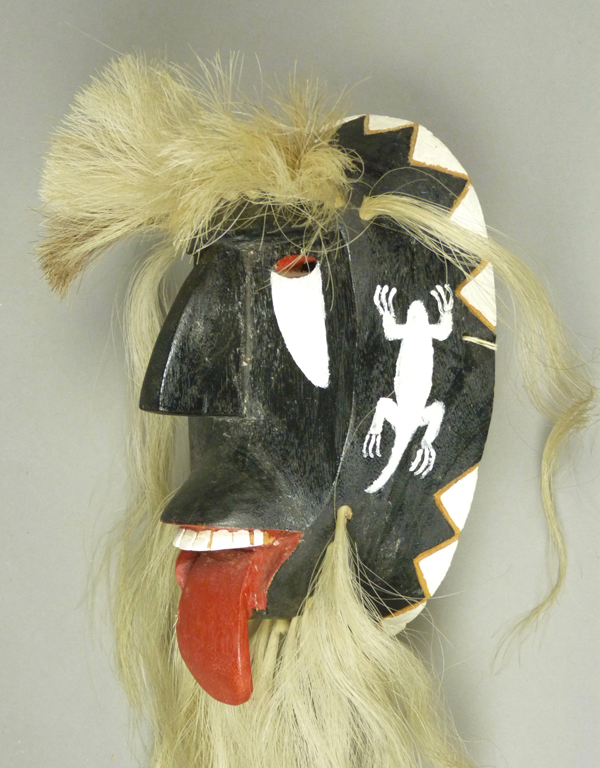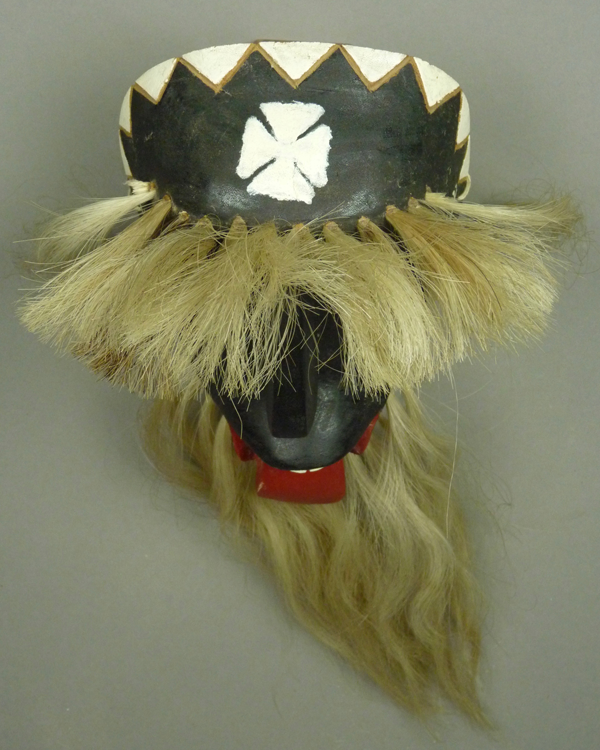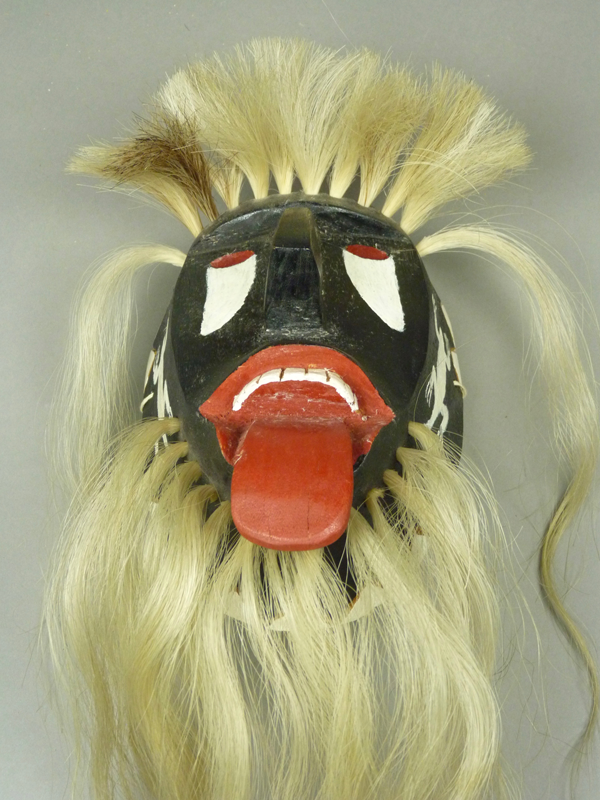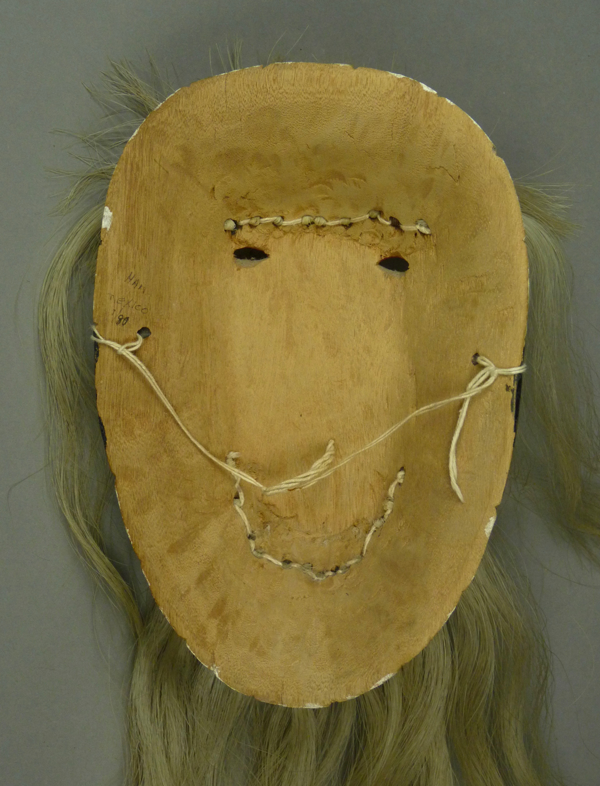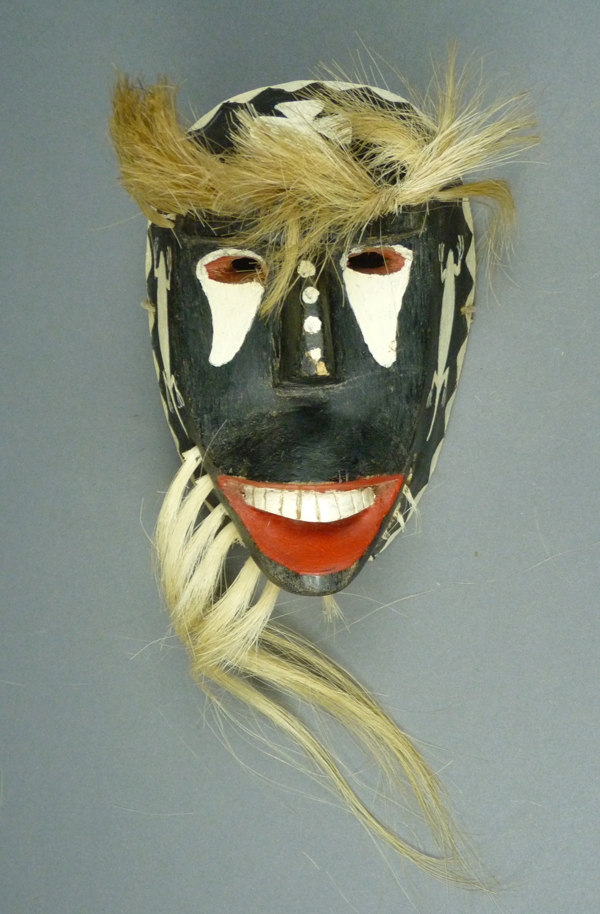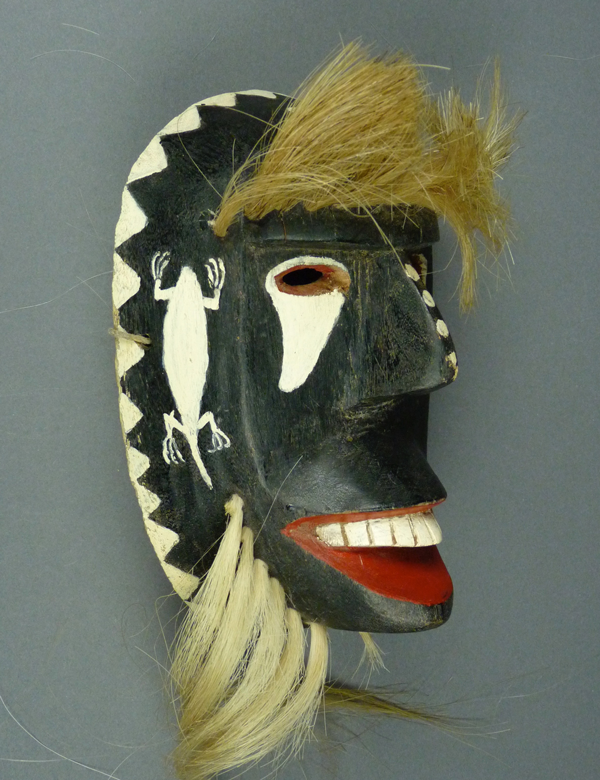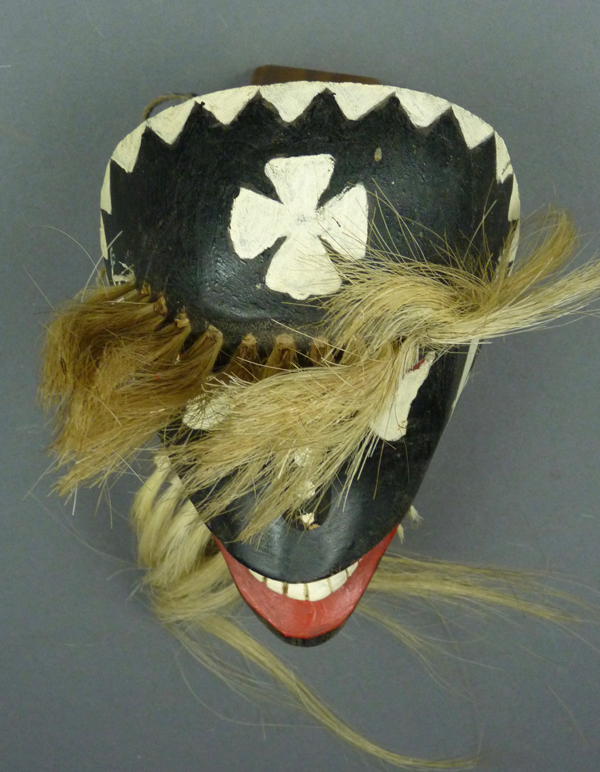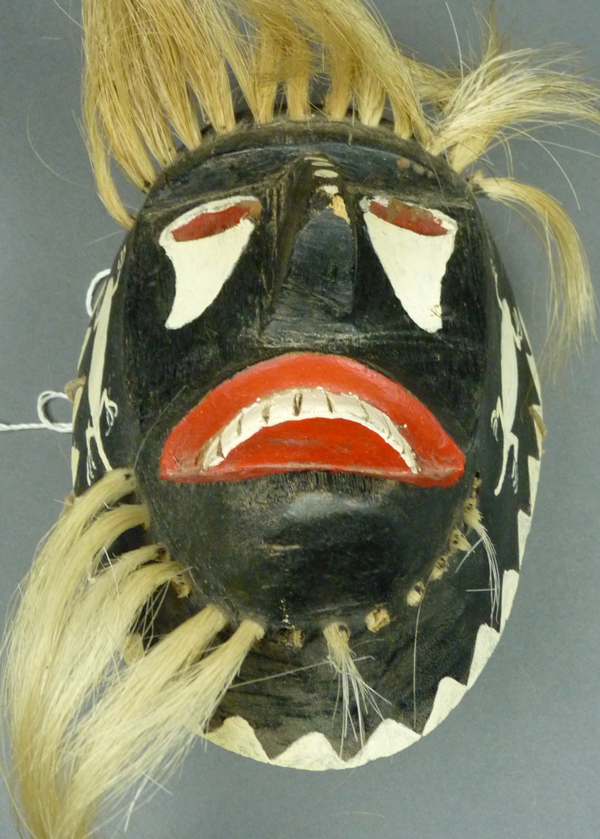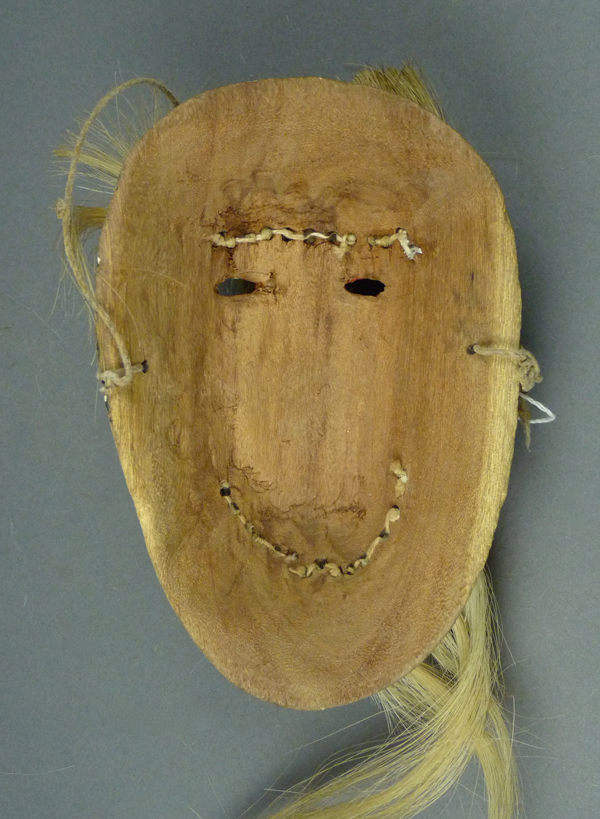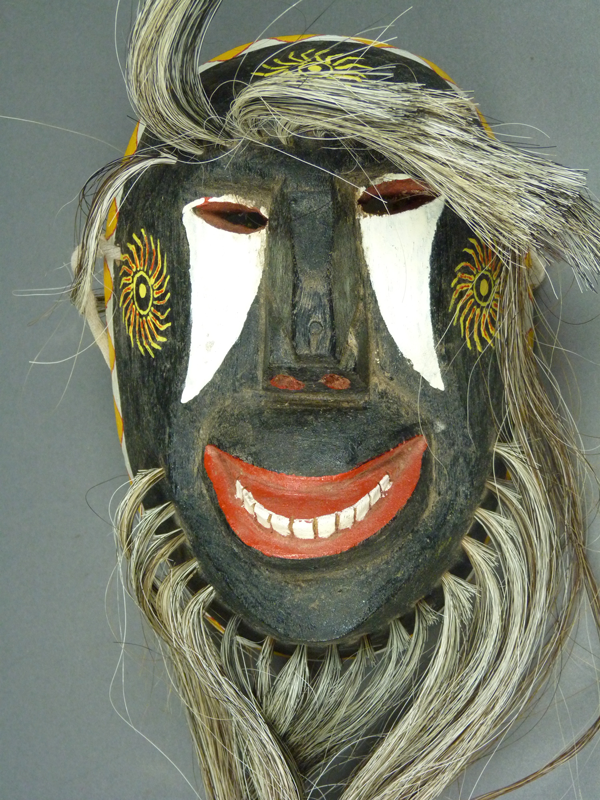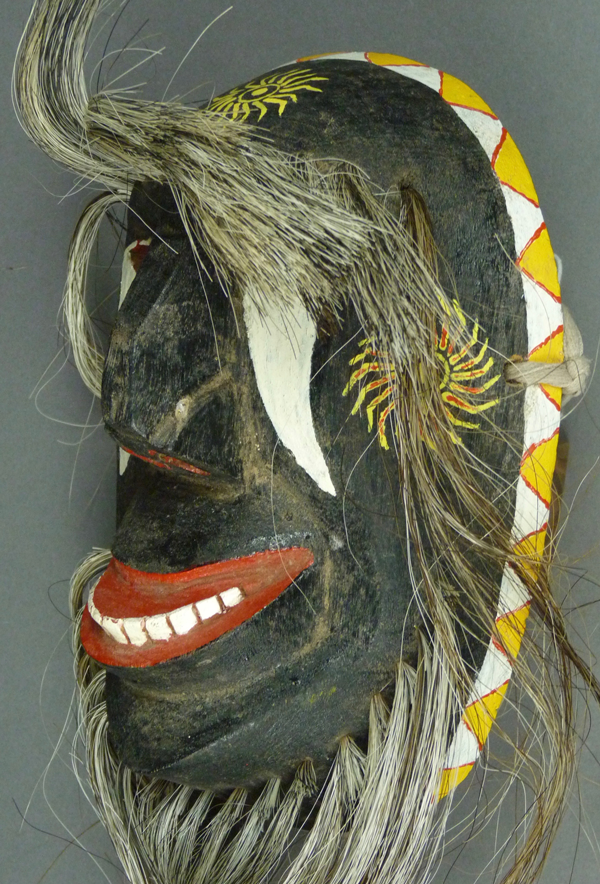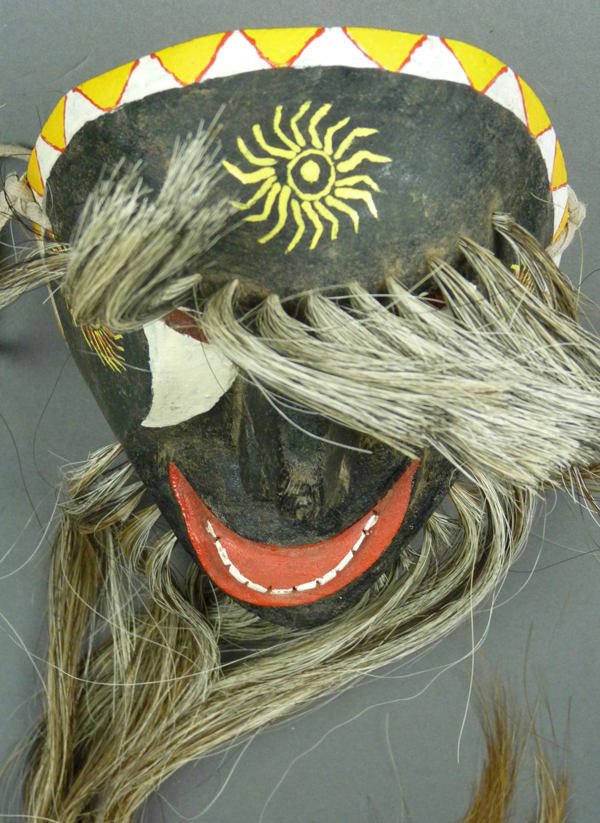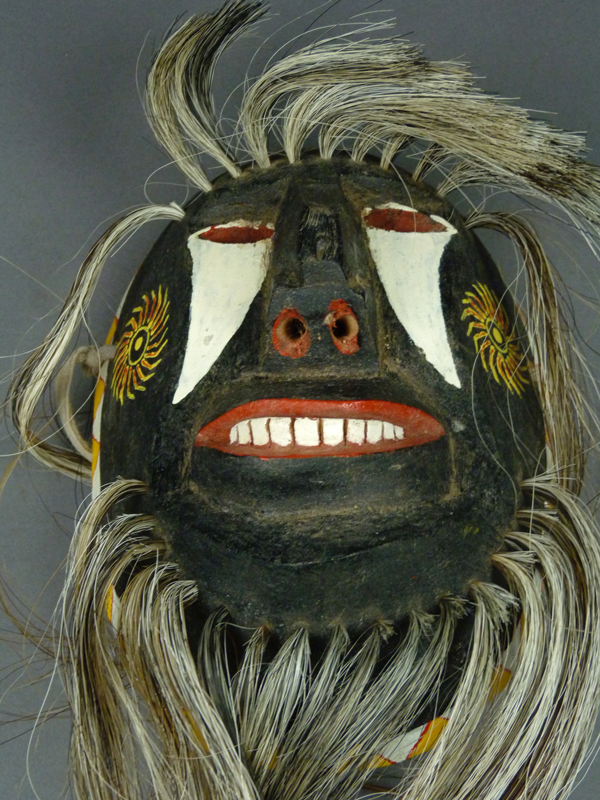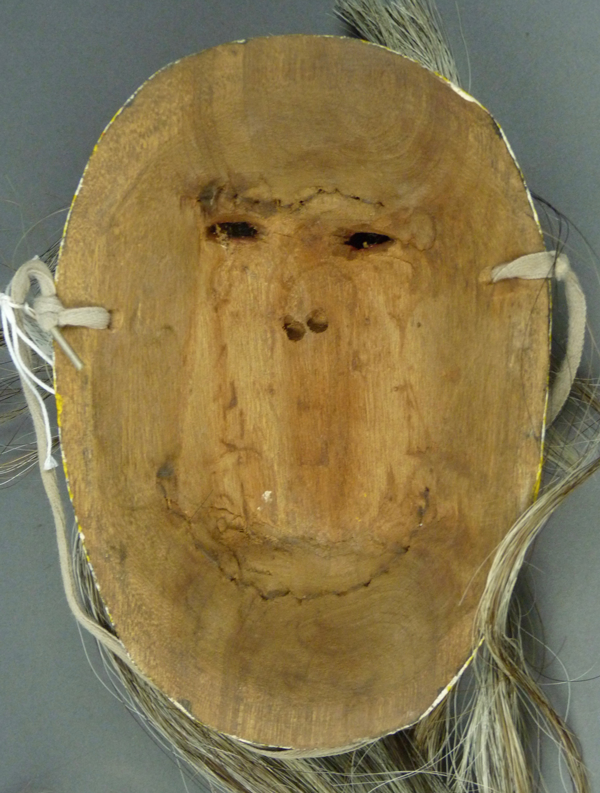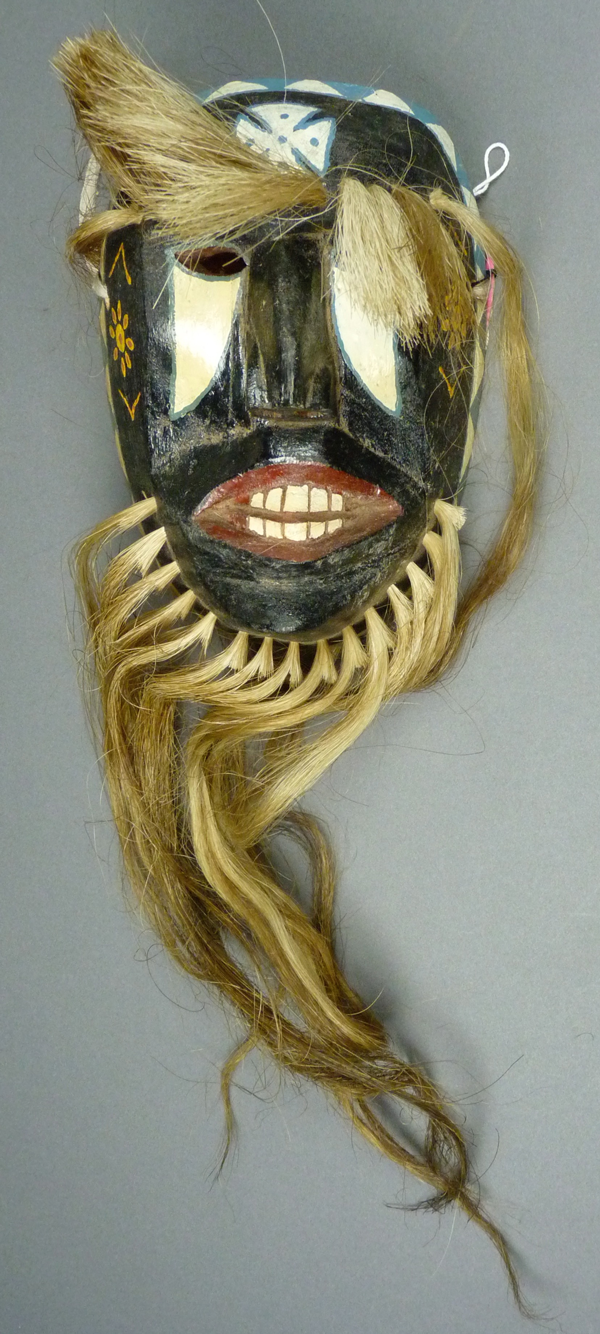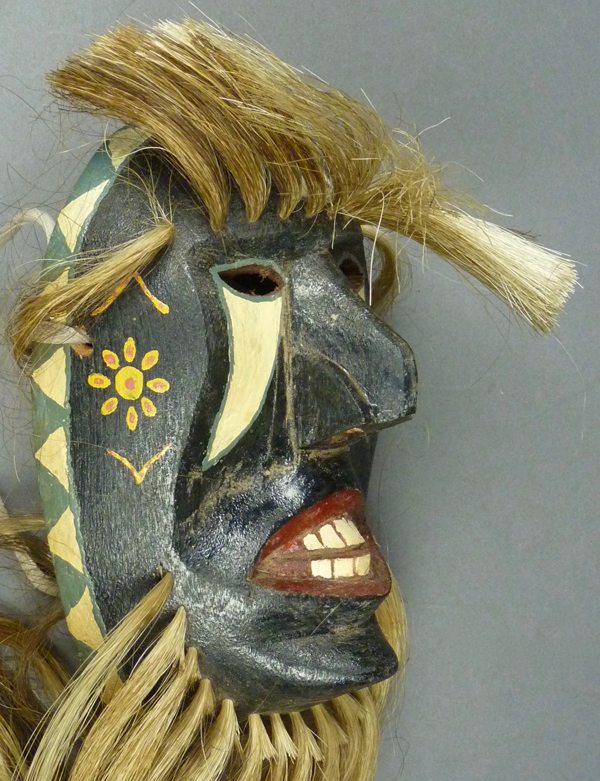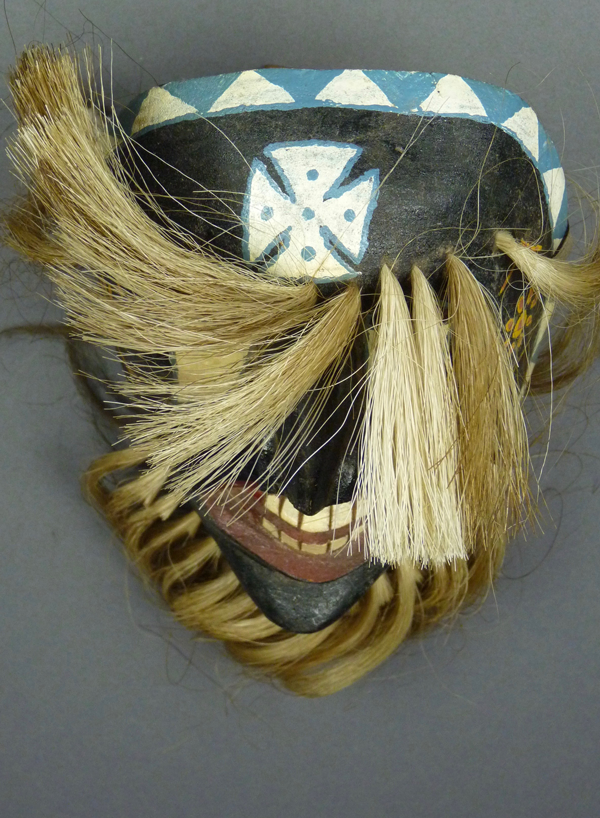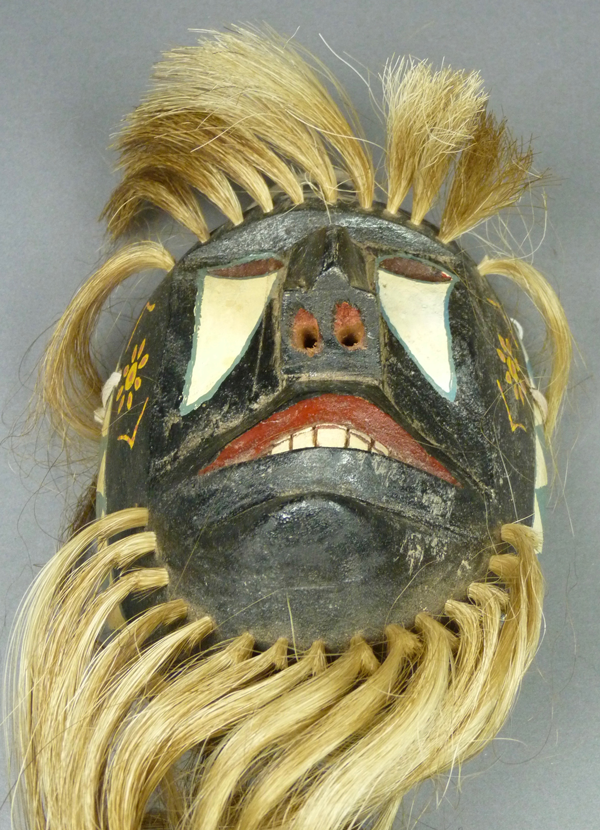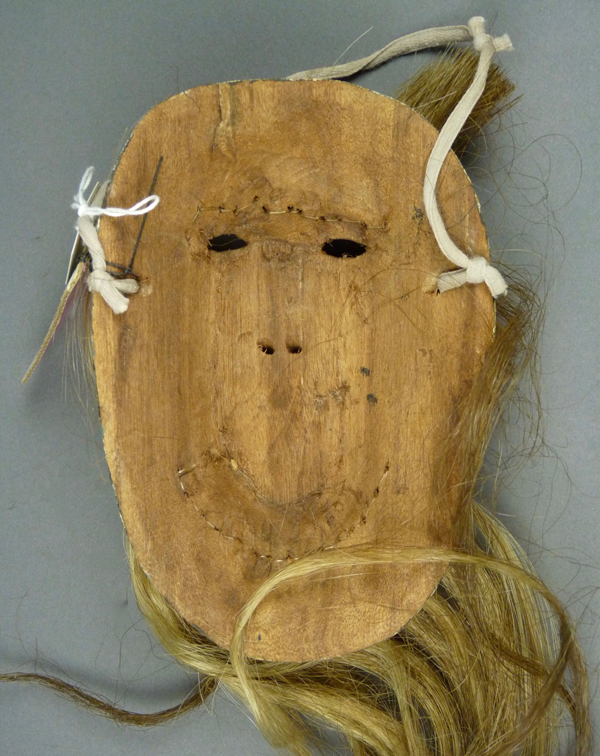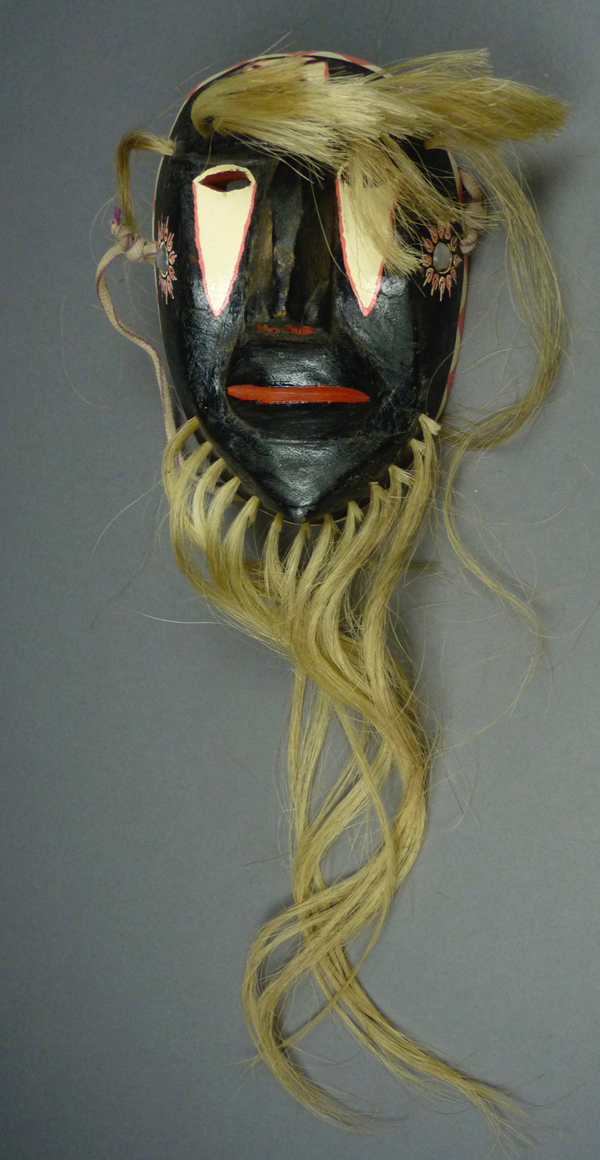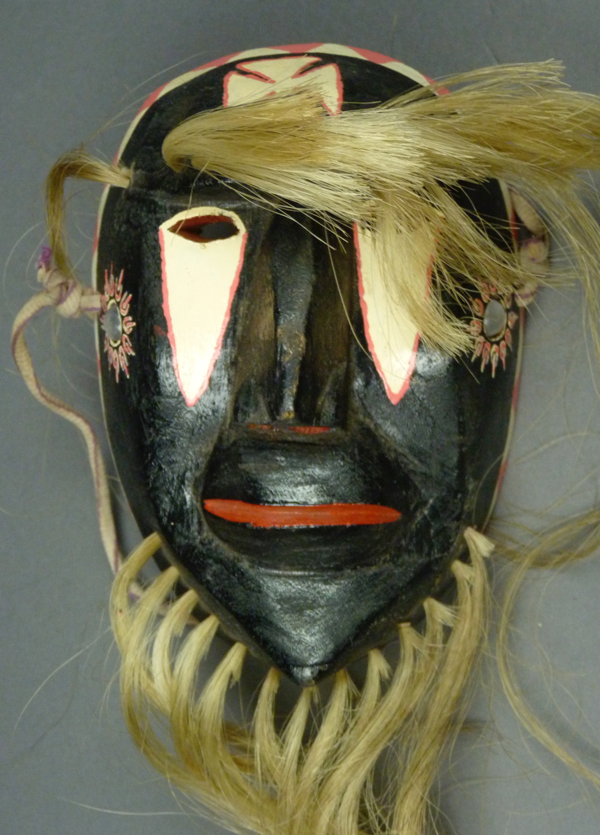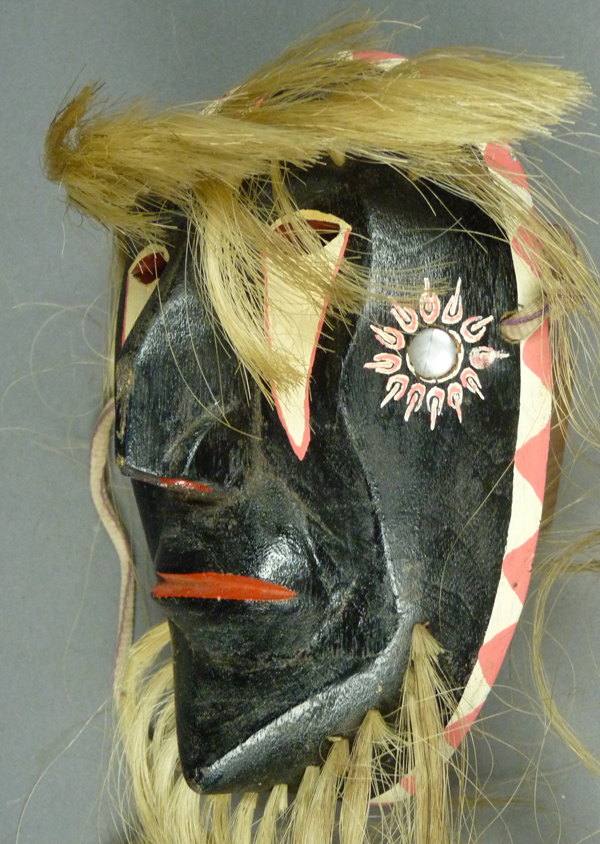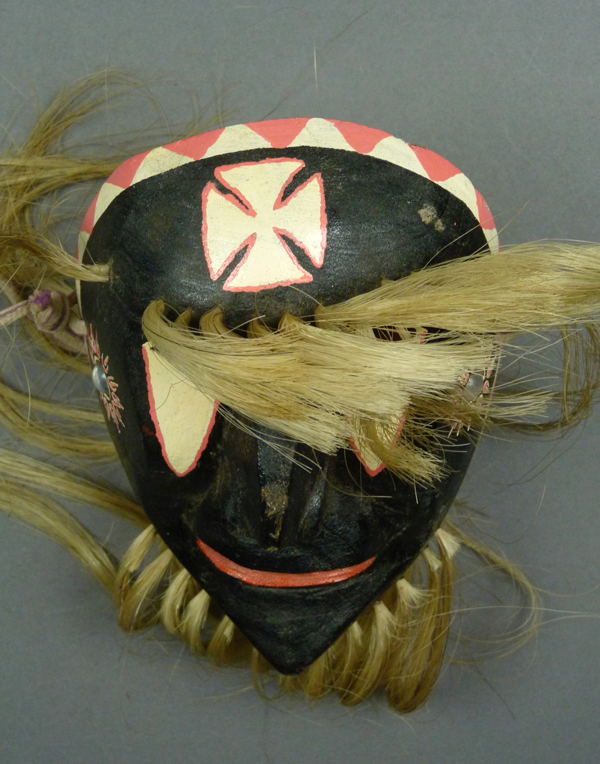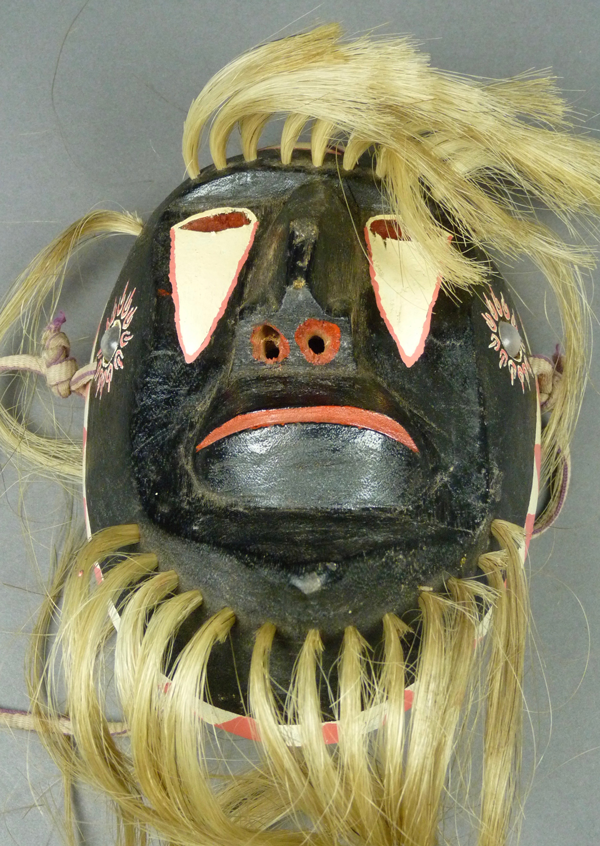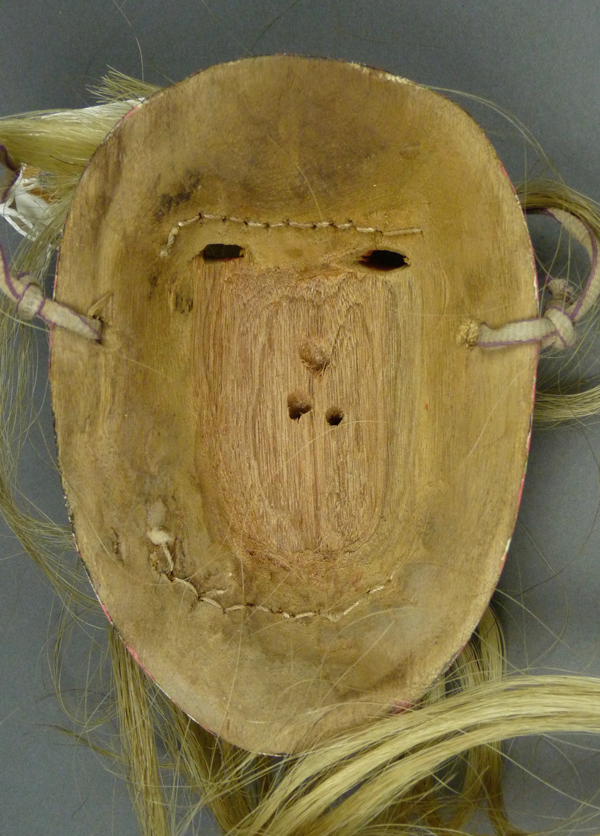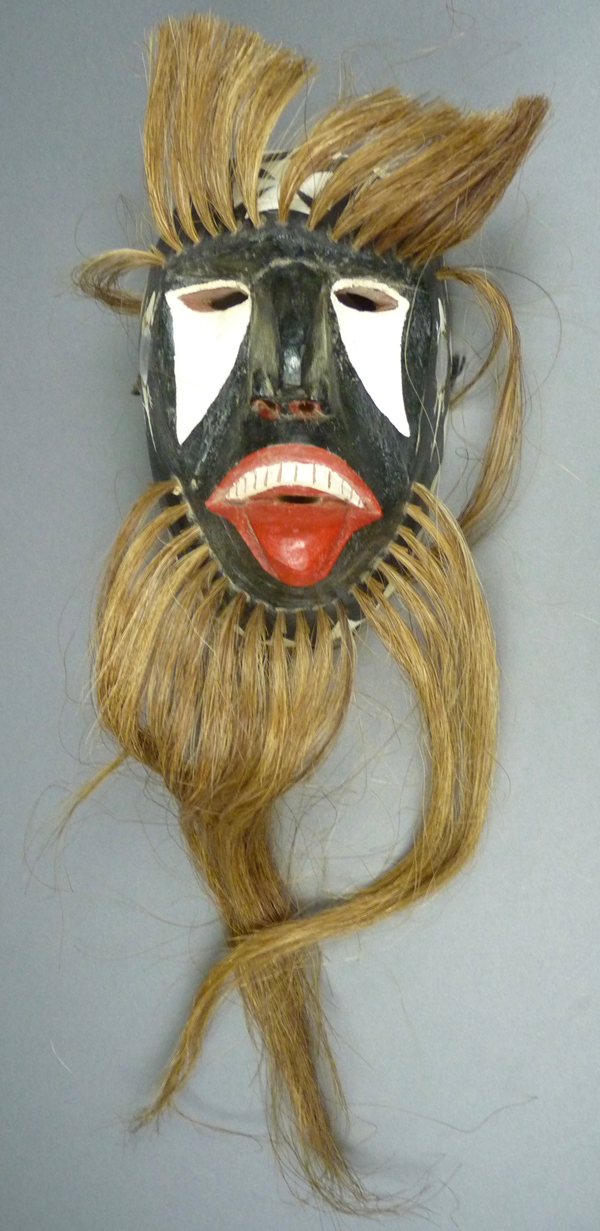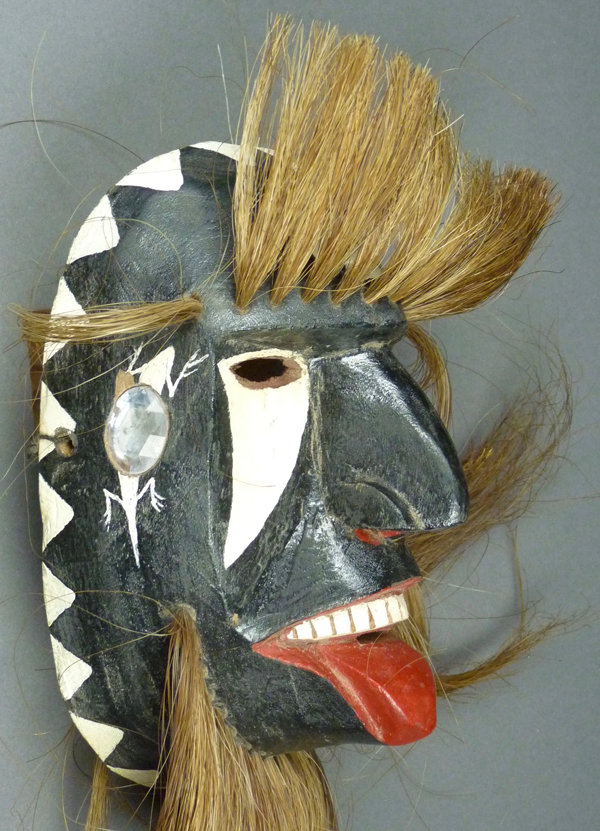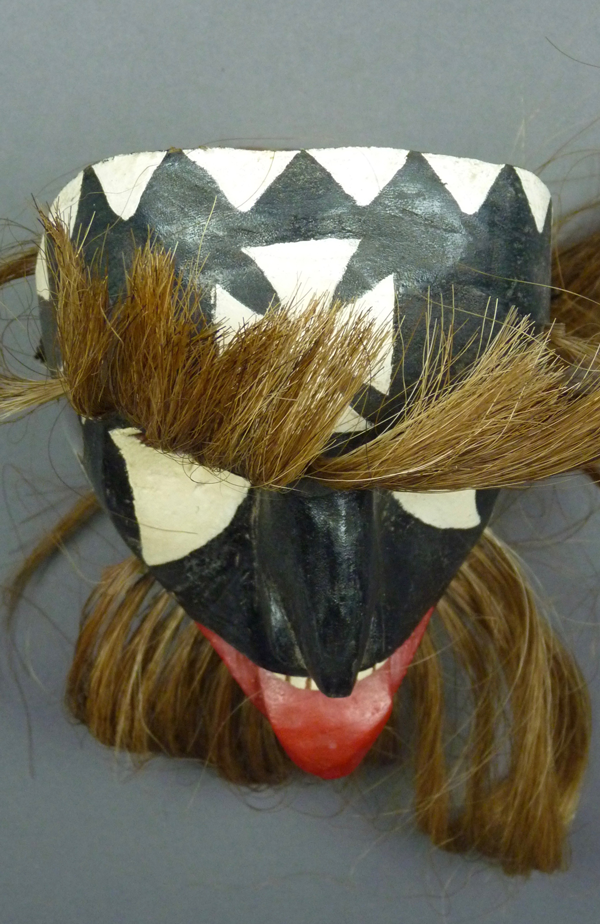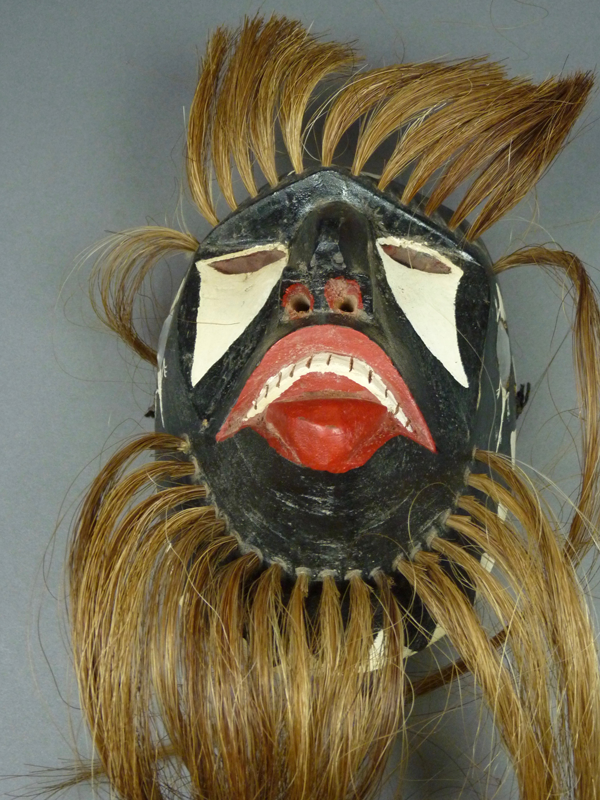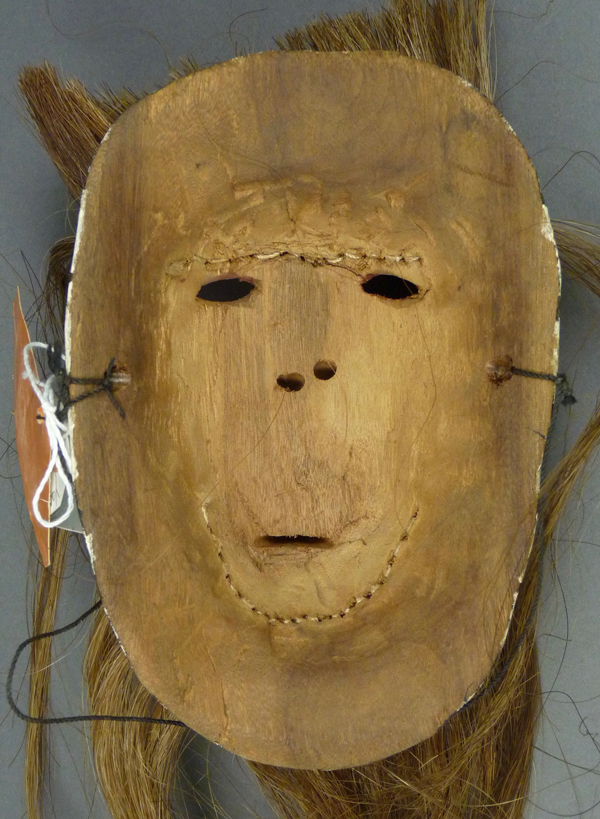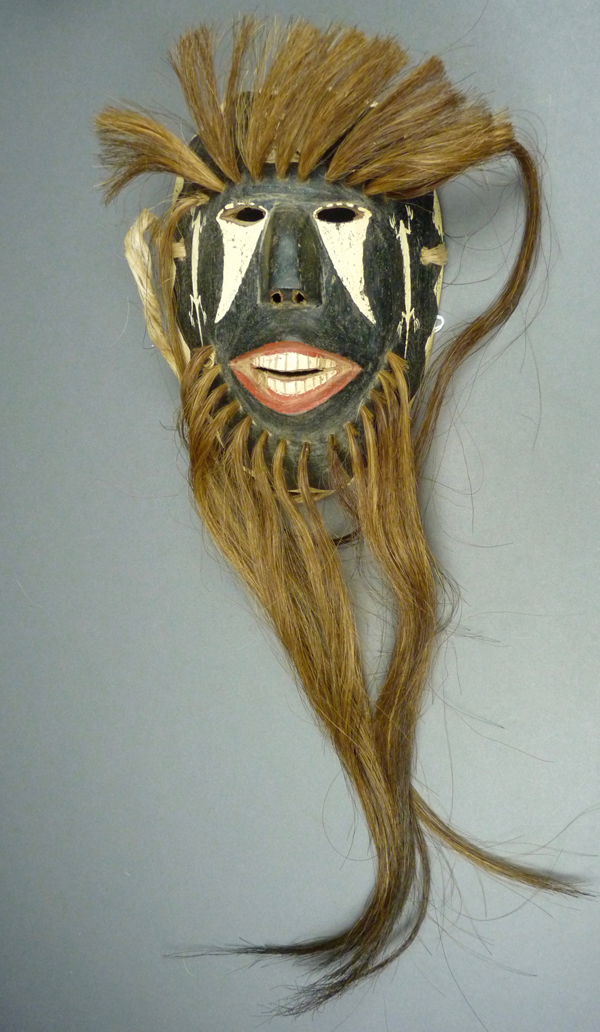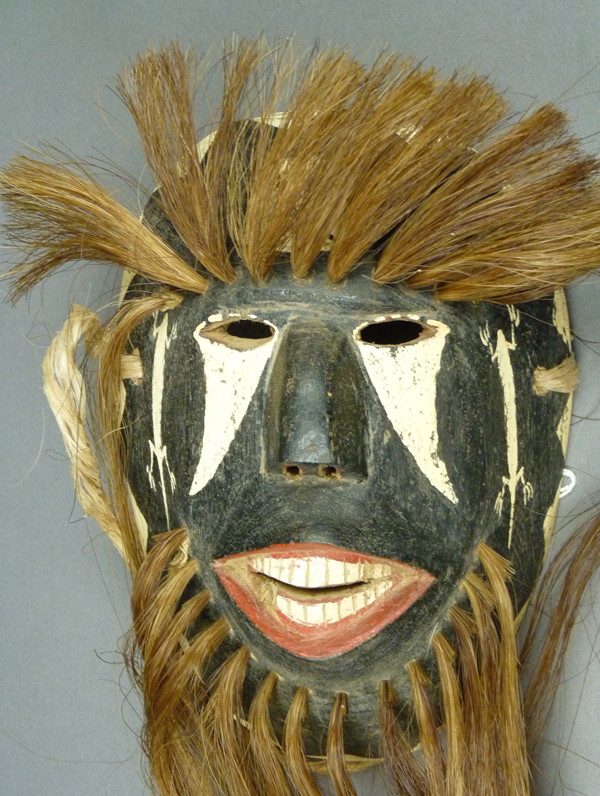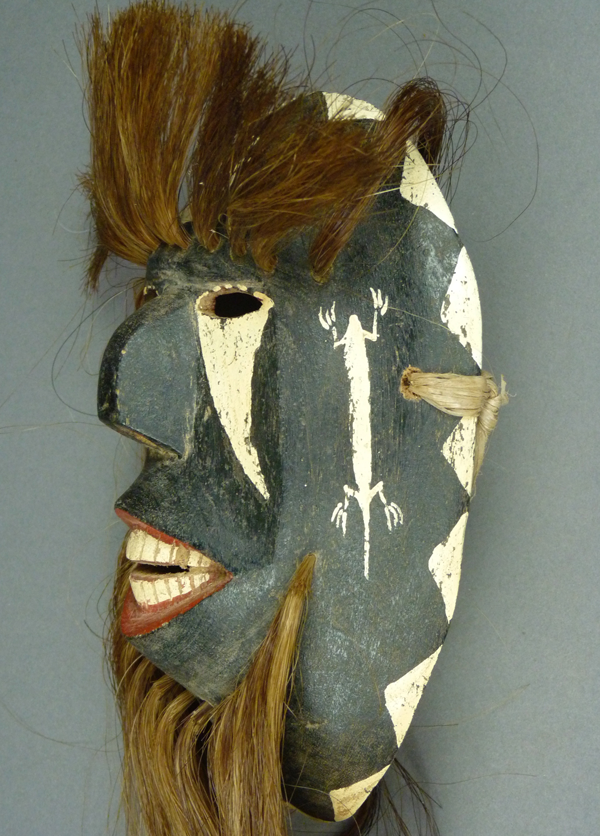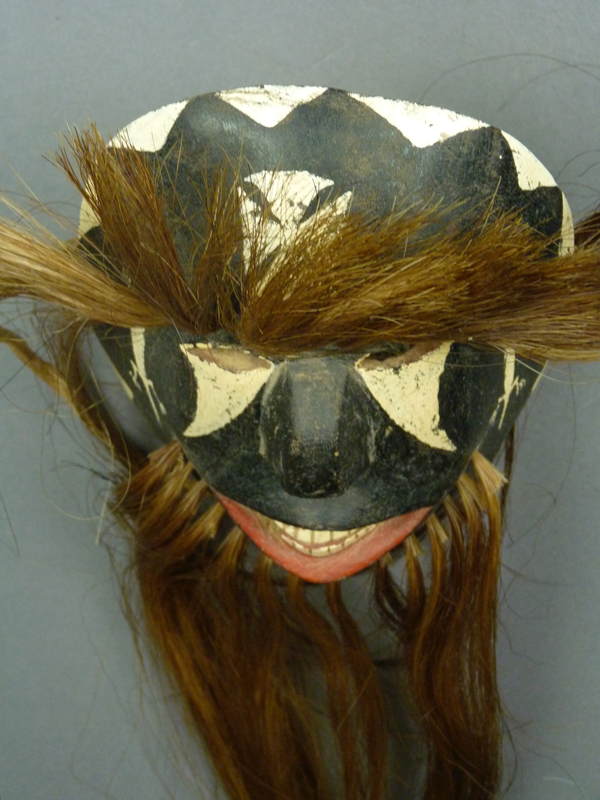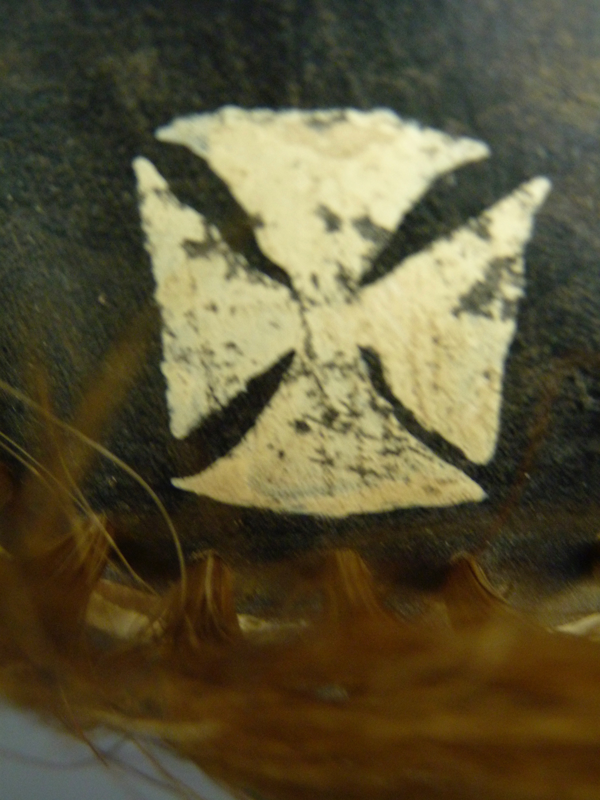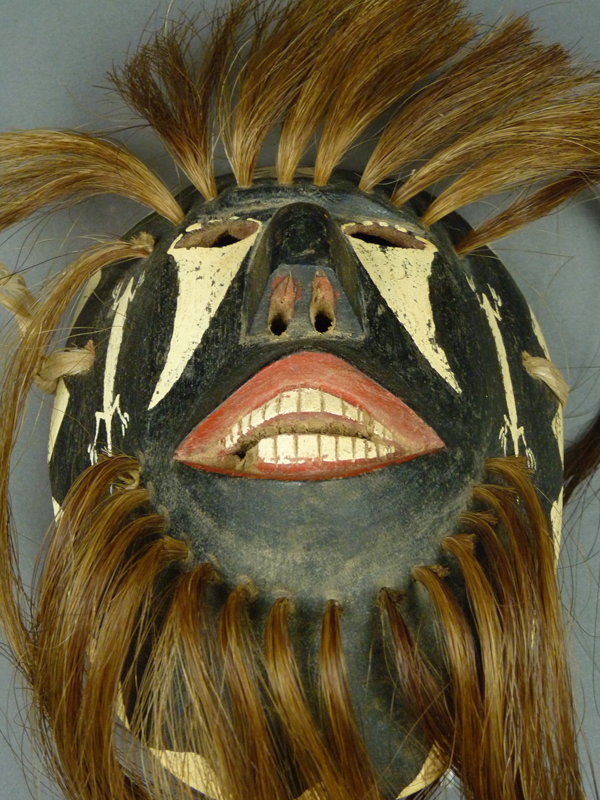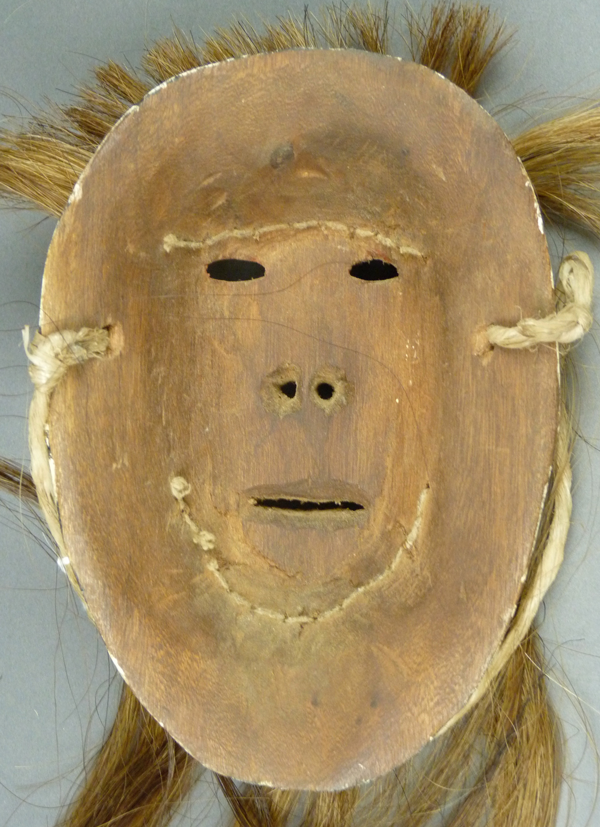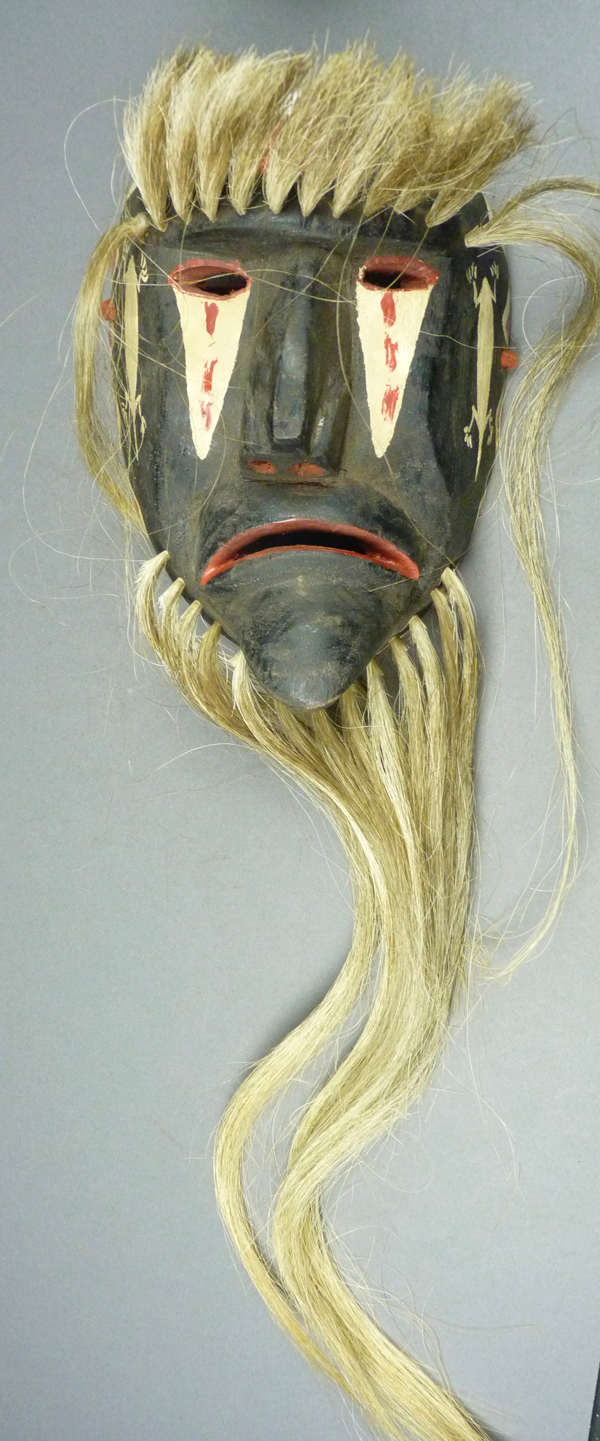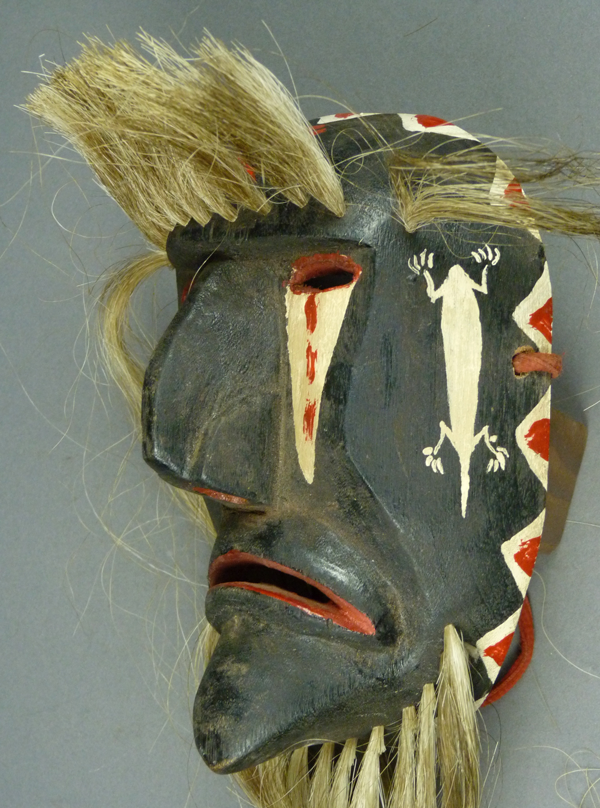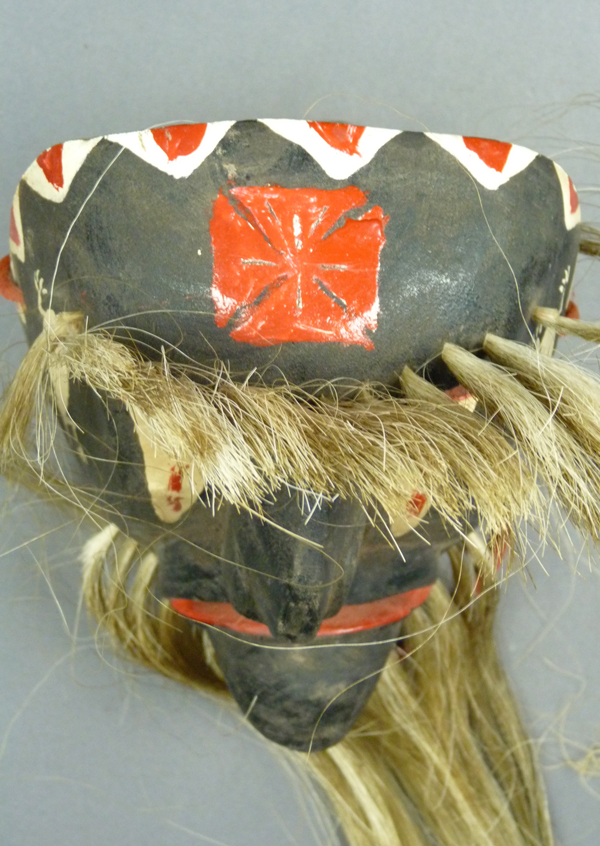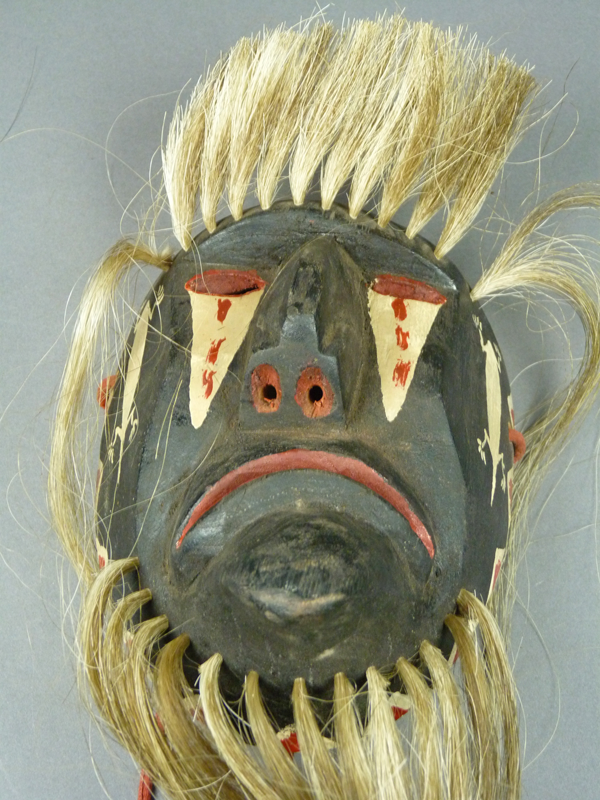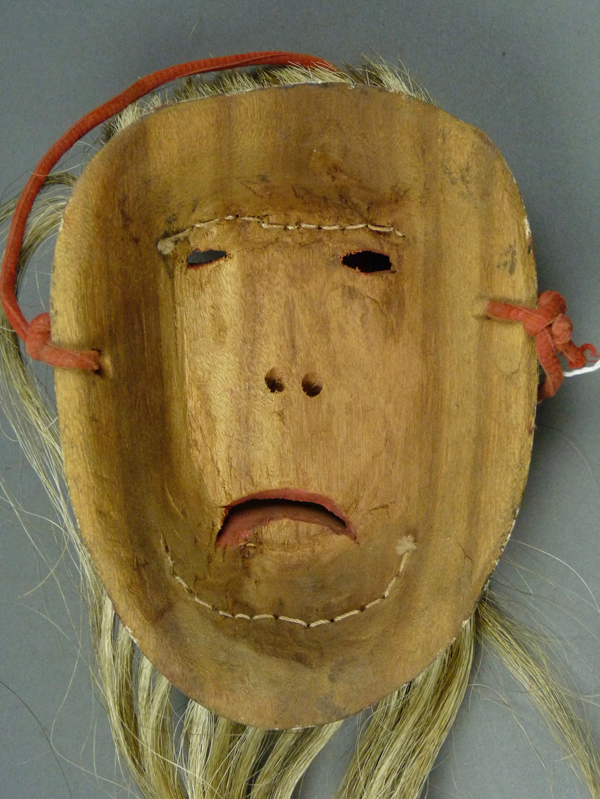Hilario Álvarez Mendoza is one of Antonio Bacasewa’s stepsons. He lives and works in Vicam Switch, which is the Vicam neighborhood near the railway line and the Vicam switching yard (http://mexicanrailroads.blogspot.com/2009/01/ferromex-nogales-to-mazatln.html). Tom Kolaz recalls that Hilario frequently brought up masks by Antonio from Sonora for dancers in Tucson. As you will see, Hilario carved in a style that resembled that of his step-father, although there are details that often differentiate their work.
Today our focus will be on human faced masks by Hilario, and I will start with the mask that introduced me to this carver, an undanced mask that nevertheless has an interesting history. To begin with, this mask was originally collected by Barney Burns in Sonora, from the carver, in 1980. Barney sold it to an Indian arts dealer in Tucson, Mark Bahti. Mark then sold the mask to a Hopi silversmith, Larry Acadiz, who bought it to hang on the wall in his house. Decades later Larry sold the mask back to Mark Bahti, and I purchased it in his shop in 2013. On the back there was a typical Barney Burns pencil inscription—HAM 1/80, but I thought it was a mask by Antonio Bacasewa, and showed it to Tom Kolaz as an example of mislabeling. As you must know if you have reading the posts about Yaqui Pascola masks, Tom and I have frequently agreed that a particular mask has been attributed to someone other than the true carver; I thought this was just another example. Tom then told me about Hilario. Here is that mask.
Generally speaking, this mask does have a lot in common with the masks of Antonio Bacasewa. For example, the hair bundles are not only stitched in place from the back of the mask, but they are also spread as they emerge from the mask surface by wooden pegs, a feature that Hilario must have learned from Antonio. The color palette and the overall design are also typical of Antonio’s masks. But then there are design details that reflect Hilario’s hand. For example, this mask has a dramatic mouth and extended tongue that make of think of the Rolling Stones™ logo. Here is another view of that mouth.
There is much more to notice in this side view. The nose is slab-like from the front. The upper lip is gracefully snouted. There is a sharp line that sets the cheeks off from the sides of the mask, giving the mask a modern and abstract appearance. Fat frogs are painted on the cheeks. The rim design is discontinuous. The overall effect of this combination is quite pleasing, and one can see why a Hopi artisan might have been attracted to it.
The forehead cross is highly typical for Antonio Bacasewa, both in the overall design and for its hand-painted quality. On the other hand, the rim design has been outlined by a deeply inscribed zig-zag line. If you were looking at the actual mask from this view, you would readily see the wooden pegs above the bases of the hair bundles, although they are barely visible in this photograph.
Here is another view of this vivid mouth.. There is no chin cross.
This mask is 8½ inches tall, 5½ inches wide, and 3¾ inches deep.
This is probably an undanced mask. On the left edge. just above the hole for the strap, one reads HAM. Mexico. 1/80.
In contrast, the next mask was collected by Barney Burns and Mahina Drees in Sonora, in April, 1987. This one, which was danced, is nearly identical to the first mask. They collected another mask that was actually identical, but I thought it would be too repetitive to show that one. This one lacks the dramatic tongue.
The dots on the nose are a regional characteristic. We see the same snouted upper lip that we observed on the last mask.
There is also the same line down the cheek, separating the face from the side of the mask. There is a similar fat frog, and the same slab nose.
The forehead cross is also the same, while the rim design is not inscribed. The hair bundles are pegged.
The manner of carving the mouth is much like that of Antonio Bacasewa. It is really obvious in this photo that there is no chin cross.
There is an old soiled strap and the rim of the back is stained from use.
For the rest of this post I will draw on the Barney Burns and Mahina Drees Burns collection to demonstrate a variety of additional danced masks by Hilario. The next was collected by Barney and Mahina in 2008, after it had been danced for 16 years by Angel Esterho Lemch.
This mask demonstrates several notable design features. First, there is an unusual forehead cross, and this design has also been painted on both cheeks. One often finds such designs, and their appearance as a trio, on Hilario’s masks, or on masks that were apparently carved by someone else but later redecorated by Hilario. Second, the nose on this mask has one of Hilario’s favorite nose designs, with the appearance of a larger block with a smaller one on top to portray the nasal ridge. On the other hand, the design of the mouth is another instance of Hilario repeating Antonio Bacasewa’s style.
The carving of the mouth in relation to the chin is distinctive, and characteristic of this artist (Hilario).
On the forehead (and cheeks) an obvious sun symbol substitutes for a Christian cross.
Hereis another look at the complicated lines and planes around the mouth and chin, which are characteristic of Hilario’s masks. He is an excellent carver and his masks are popular with Pascola dancers.
The back shows significant staining from use. This is best appreciated by comparing the dark staining on the areas that would contact the dancer’s forehead and chin to the relatively unstained area in the middle. A shoelace has been used for the strap.
The next mask was danced in Potam for ten years by Alejandro Matus and then collected by Barney Burns and Mahina Drees Burns at an unrecorded date. It combines features from the three that preceded it, demonstrating that Hilario has a stylistic vocabulary of his own that is characteristic and easy to spot. The nose on this mask is very similar to the one just above, and these two noses encompass a range of similar variations that Hilario commonly used.
The designs on the cheeks resemble flowers or suns, but in this case there is a Maltese cross on the forehead.
From the side the nose looks very different than one might have expected from the front view. The line down the cheek curves gracefully on this mask. The mouth is nicely carved. Actually is is a wonderful mask.
This dotted and outlined cross is very typical for Hilario.
The profile of the nose, as seen from below, is shockingly different in comparison to the side view.
This mask has obvious wear and the strap is soiled from use.
The next mask has a closed mouth. Otherwise it has many features that resemble those you have already seen.
The sun designs on the cheeks have jewels in their centers.
This is another mask with that graceful line down the cheek. The mouth is closed, but dramatically snouted.
This is Hilario’s usual forehead cross design. As you can see, he often omits inscribed outlines for his design elements.
The base of the nose has such a characteristic shape on masks by this carver.
Hilario rarely if ever includes a chin cross.
The back of this mask demonstrates significant staining from use.
Here is another one with jewels on the cheeks. This was said to be a mask by Felipe Álvarez, but it has Hilario’s now familiar nose. It was danced for 9 years.
A good side view of the nose follows.
Note the line down the cheek.
In the next photo the base of the nose erases all doubt.
This is another well worn mask.
Some of Hilario’s masks lack that dramatic line down the cheeks. This one was collected in 2002 after being danced for 10 years.
This nose is plainer than the norm.
The upper lip is snouted. The mouth and teeth are nicely carved.
There is a line down the cheek but it is more subtle. These lizards on the cheeks are very skinny, in contrast to others that seem so fat.
Here is that characteristic cross.
The back of this mask demonstrates marked staining.
I included one more of Hilario’s masks to show this wonderful and highly traditional scowling mouth. It was danced for 10 years.
This mask has Hilario’s most characteristic nose.
We see the usual graceful line down the cheeks.
The forehead cross is characteristic.
One is not surprised to see the shape of the base of this nose.
Significant staining around the rim contrasts with the mildly stained center.
Next week we will look at animal masks by Hilario.

